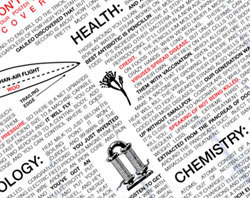An Ariane 5 rocket launched two scientific space observatories, Herschel and Planck, at 13:12 GMT this morning that will help scientists better understand the formation of the universe.
The launch took the better part of 30 minutes from ignition to spin-up and separation of the Planck and Herschel.
The launch:
[Herschel and Planck Launch – YouTube]
My physicist friend Richard Querel works with the group that built SPIRE, an infrared imaging camera and low-resolution spectrometer that was aboard the Herschel. He tells me the instruments will be sensitive down to picojoules, which is the equivalent to the energy emitted by one living cell, or to a dim star, very far away.
It’ll take 3 months for them to get to their orbit, but they’ll likely start collecting science validation data immediately.
Herschel has the largest mirror of any space telescope now in orbit. Its 3.5 metre diameter primary mirror is one-and-a-half-times the size of the Hubble Telescope’s main reflector.
From the Herschel Space Observatory entry on Wikipedia:
The mission, formerly titled the Far Infrared and Sub-millimetre Telescope (FIRST), will be the first space observatory to cover the full far infrared and submillimetre waveband. At 3.5 meters wide, its telescope will incorporate the largest mirror ever deployed in space. The light will be focused onto three instruments with detectors kept at temperatures below 2 K. The instruments will be cooled with liquid helium, boiling away in a near vacuum at a temperature of approximately 1.4 K. The 2,000 litres of helium on board the satellite will limit its operational lifetime. The satellite is expected to be operational for at least 3 years.
